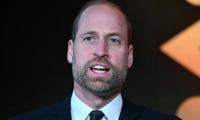Mr Asif Ali Zardari has finally picked a position for himself to stay dominant and remain active in politics within Pakistan Peoples Party, PPP, ignoring “advice” that in the interest of the party he should distanced himself. Is he still confident that Bilawal alone could take the party into a much improved performance in 2018 elections in the presence of opponents like Nawaz Sharif and Imran Khan?
He is now the president of Pakistan Peoples Party Parliamentarians (PPPP) and would continue to rule the party from Dubai.
Now, whether it is the right approach and how it can help the party, he has now dispelled all speculations that he will become the Patron or Rahabar, as suggested by some senior leaders. So, the three P’s or four P’s, they have to do politics under his umbrella.
In the next two years before 2018 general elections, the party has a huge task ahead and if Mr Zardari has finally become the President of PPPP, he has to come and lead the party as after this decision, Bilawal Bhutto’s position as Chairman PPP, though become independent on paper, but it would be four P’s, which will matter, being the registered party. This decision has come about a month before Bilawal’s visit to Punjab, Khyber Pakhtoonkhawa and Balochistan. At present the party is far behind PML-N and Pakistan Tehreek-e-Insaf (PTI) in the race for the next elections but it has still time.
However, one wonders how the party would face the challenge in a situation where party candidates outside Sindh are not even ready to associate themselves with Mr Zardari. It’s a challenge for bold leaders like Ch. Aitzaz Ahsan, Nadeem Afzal Chan, and Qamarzaman Kaira to go to the people and try to improve the party and Mr Zardari’s image.
Zardari must return and do popular politics or review the proposal of the CEC and let some senior leader take the position of the party president, and Bilawal take the lead role. His active position in the party may not help Bilawal.
Unlike in the case of Begum Bhutto and Benazir Bhutto differences over leadership, Mr Zardari may not face such a challenge from Bilawal or is there an apprehension?
Late Begum Nusrat Bhutto took over the party in the most difficult period, 1978 to 1983, and led the party well, though she regretted that CEC could not save Zulfikar Ali Bhutto. When Benazir Bhutto became the co-chairperson, there was “inhouse” struggle and Begum Bhutto was not at all pleased when she was given a dummy position of life chairperson. But BB led the party well from 1985 onwords.
The mother and daughter also had differences over the role of Mir Murtaza Bhutto. Begum Bhutto had a soft corner for “al-Zulfiqar” but BB always distanced herself from militant politics. In fact, after her return in 1986, she did told all party activists to distance themselves from such activities. She also sacked many of them which later resulted in the emergence of Peoples AMN Committee.
Begum Bhutto wanted a role for Murtaza and did not listen to BB’s advice that his life could be in danger. Thus, when Mir formed PPP (Shaheed Bhutto), it was Begum Bhutto, who campaigned for both.
Keeping this background one could see power struggle in the PPP as well, though in this case father is far more matured, understand politics much better and also knows the strength and weaknesses of Bilawal. His only difficulty is that he is finding it difficult to transfer a strong party to his son whereas Begum Bhutto passed on a strong PPP to BB.
It would be quite interesting to see whether this is a makeshift arrangement for Mr Zardari or the Chairman three P’s is a makeshift arrangement and Mr Zardari still in a mood to keep his dominant position intact. This goes with his personality and reputation irrespective of the perception.
Eight years back he surprised many when from no position in the party, he became the co-chairman, within three days after the assassination of PPP Chairperson Benazir Bhutto.
“Asif always surprised friends and foes, both,” said one of his colleagues from Petaro College, Jamshoro, on condition of anonymity. He acts but hardly reacts and that is one reason why in politics he also knows the art of taking his worst enemy along, he added.
Having such a reputation in college days among friends is one thing but politics is altogether a different ball game. Pakistan Peoples Party, or Pakistan Peoples Party Parliamentarians, is passing through one of the most difficult periods in its 48 years of existence.
Zardari surprised many when he became the Co-Chairman of the three P’s after the assassination of Chairperson Benazir Bhutto in 2007, and has filled position of the four P’s, after death of its President late Makhdoom Amin Fahim.
He again surprised the party when instead of taking the position of the prime minister, he got himself elected as president of Pakistan and also delegated back all powers to the parliament and premier.
He knew that if he became the prime minister, he would not get the indemnity which he could enjoy as president.Now, he became the president of the party, which is registered and would contest the election. Thus, the party which Bilawal is leading may be the senior party but for practical purpose it would now be PPPP and not PPP that would matter within and outside the parliament and also look after the Sindh government.
Mr Zardari has now consolidated his position and retook the control of the four P’s and let Bilawal do some politics as Chairman three P’s to keep the party spirit alive.
The PPPP was formed as makeshift arrangement in 2002, after the former president, retired General Pervez Musharraf, in an attempt to keep Benazir Bhutto and PPP out of politics got three P’s unregistered. He also allegedly managed to get her disqualified from contest. The same tactic had been used against PPP by late General Ziaul Haq, when party’s original election symbol sword was removed from the list of symbols.
What was most surprising was the fact that in the last eight years, when PPPP was in power it never tried to restore its original party with its election symbol sword. Now, some other smaller groups of PPP have filed such claims.
Though it was merely a formality but the resolution to make Mr Zardari president of four P’s came in the CEC of three P’s and may now go for formal ratification in the CEC of PPPP, whose office bearers are different.
However, senior PPP leader, Qamarzaman Kaira said, “PPP is fully authorized to propose president of PPP Parliamentarians and there is no problem. He will quit as co-chairman of PPP.”
But, the problem of the PPP or PPPP may persist particularly outside Sindh, when it comes to electioneering. When PPP senior leaders met in Dubai in September, some of the leaders from Punjab frankly told Mr Zardari that until he distanced himself from the party, it would be difficult to revive the party. Rightly or wrongly, his image does not go well and as a result the party found it difficult in getting candidates and even when they got, they refused to put his picture on their banners and posters.
The party had not held any public meeting in any historic or traditional venues like Liaquat Bagh, Rawalpindi, Minar-e-Pakistan, Lahore or similar venues in major cities for the past several years.
Mr Zardari in the past had made several attempts to get popular support for himself but with not much success despite remaining in jail for 10 to 11 years. His supporters tried to introduce him as “Nelson Mandela” of Pakistan.
Even when Benazir was alive Mr Zardari made an attempt to build his political image when after getting out of prison a welcome reception was arranged on his arrival at Lahore airport, but the show did not get much response.
Thus, it’s a tough task for all the three, Asif Ali Zardari, Bilawal Bhutto and Pakistan Peoples Party to make the party strong enough before they celebrate PPP’s “golden jubilee” in 2017, when it intends to abolish Pakistan Peoples Party Parliamentarians.
The writer is senior columnist and analyst of Geo, The News and Jang.
Reports indicate that they tried to breach one of gates, harassed staff, and even scaled walls of premises
Nasir praised role of Interior Minister Syed Mohsin Naqvi, who controlled situation with tolerance
A fierce exchange of fire ensued, but culprits managed to escape under cover of darkness
Police said booked leaders and BYC workers gathered at main Turbat Chowk
Experts say draconian internet censorship threatens to cut country off from promising future
Bokhari emphasised that cases have been registered against "Fasadis", and no one will be spared







